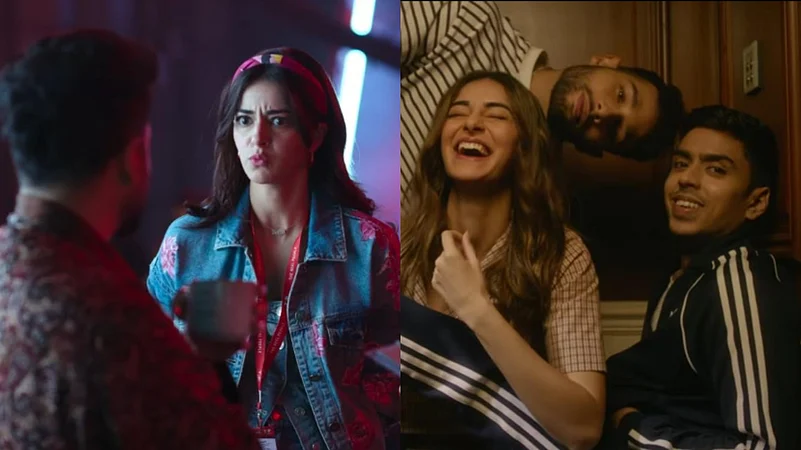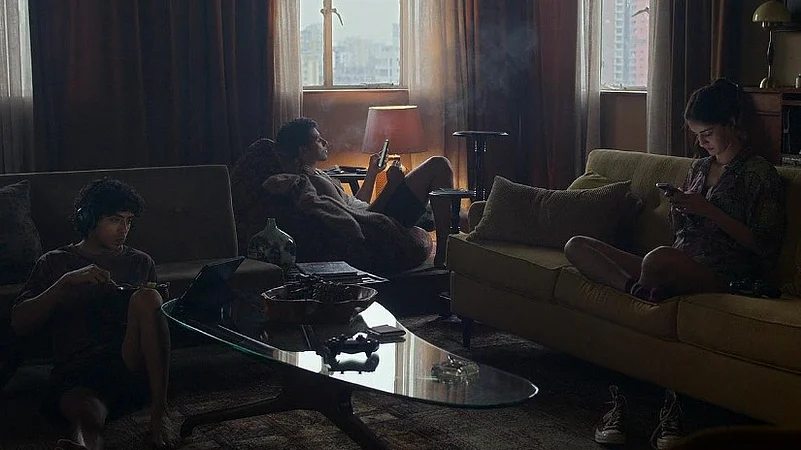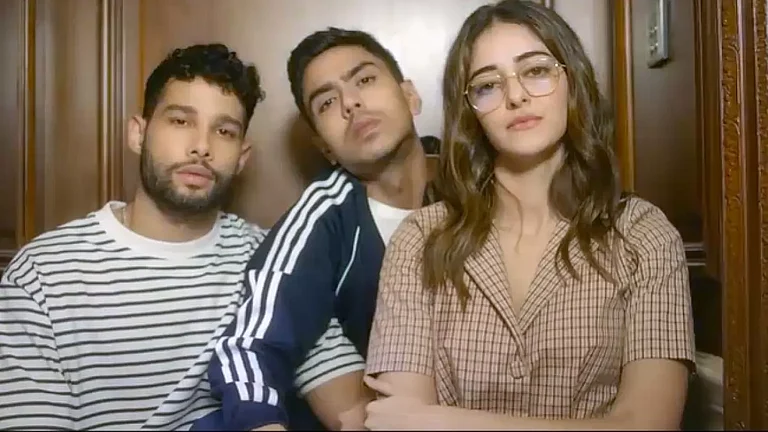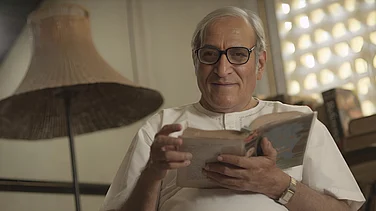When you think of Gen Z, what comes to your mind? Rebellious? Impulsive? Weird slangs? Phone addicts? Lazy? You’re not entirely wrong, but it’s important to clarify that Zoomers, born roughly between 1996 and 2012, are more than these labels. Think about it: what sources have been used to create these assumptions?
‘Call Me Bae’ Gets ‘Kho Gaye Hum Kahan’ in Gen Z’s World
Gen Z is more than a punchline: Recent media reduces a generation to shallow stereotypes while dodging the deeper issues of modern life.

The latest Indian show milking such stereotypes is Call Me Bae (2024). It centers around Bella aka Bae (Ananya Panday), who never forgets to say her daily affirmations, “I’m Bae, I’m here to slay, seize the day.” She embraces the “delulu is the solulu” mantra, believing that everything will work out—whether it’s landing a job without a college degree, securing a house in Mumbai as a “single woman working in media,” or breaking a #MeToo story about a business tycoon entering politics. These self-assurances combined with delusional thinking, reflect Gen Z’s approach to manifesting near-impossible goals—a mindset that has become viral online. But the constant barrage of these references makes it painfully obvious that the creators designed the show to be chopped up into ‘relatable’ reels and shorts.

The constant judgment from the previous generations hangs over these moments, making it clear that the show misunderstands why positive declarations and delusional thinking resonate with Gen Z in the first place. Most of the Zoomers graduated during the pandemic and are just starting their careers. On top of that, they are dealing with climate anxiety, inflation, and the threat of an impending recession. As Fortune magazine put it, rather than climbing the corporate ladder, Gen Z is turning to practices like “3-6-9 method”—a numerology based rendition of the law of attraction where you write down motivational phrases 3 times in the morning, 6 times in the afternoon and 9 times at night—using positive thinking and visualisation to combat late-stage capitalism.
The show just touches on serious topics like gambling, kleptomania, and the complexities of a mother-daughter bond. Its scenes, intended to be viral clips, didn’t take off because the show’s surface-level treatment reveals its true intent. If the show’s dialogues didn’t get them the viral oomph they were looking for, they went on to include moments that were already viral—like the recreation of Sidharth Malhotra-Kiara Advani’s wedding entry or Poo-inspired references from Kabhi Khushi Kabhie Gham (2001) to rate kids’ costumes. There’s even a nod to Siddhant Chaturvedi’s “Jahan humare sapne poore hote hain, wahan inka struggle shuru hota hai” and a cameo from Insta-famous Orry.
Ultimately, Call Me Bae uses reels and shorts to bait Gen Z into watching. But by focusing solely on Internet fame, they’re reducing Gen Z to a dumbed-down audience and giving us even dumber characters with flimsy storylines. While such works use Gen Z tropes and language to push the plot forward, they often sacrifice the depth needed to tackle important themes like infidelity, the lust for instant success, and social media addiction.

Consider Kho Gaye Hum Kahan (2023), which revolves around a trio: Imaad (Chaturvedi), a Tinder addict representing everything Gen Z is supposedly trying to avoid through hookup culture; Ahana (Ananya Pandey), who obsessively posts pictures and stalks her ex on Instagram; and Neil (Adarsh Gourav), an Internet troll who isn’t happy with himself. Imaad is a stand-up comic whose sets revolve around clichéd topics like “situationships” and “influencers”—something that only non-Gen Zers would find funny. Ahana, heartbroken and scrolling through her ex’s feed, starts working out with Neil, who’s a personal trainer, to get “hotter” and post more thirst traps online. Neil, tangled in a messy situationship with an influencer, takes things further by hacking into his ex’s account and exposing her “real” story online. By the end, they all come to the convenient realisaton that their phones have made them addicts. For a film that drags on, the message boils down to: Gen Z kho gaye kahan? Apne phone mein.

The movie cautiously labels the three as Gen Z—establishing their ages as 25-26. But is Ahana’s addiction to posting online for validation and Neil’s internet trolling limited to one generation? Not really. As for Imaad, Gen Z isn’t as addicted to dating apps as the film suggests. The Print reported, “They (Gen-Z) are now finding peace in abstinence and love on matrimonial sites. All our mothers are practically doing a victory dance—looks like we are warming up to the vintage vibe of arranged dating, if not marriage.”
Recently, to keep users on Bumble, the popular dating app where women make the first move, the company launched an ad campaign with billboards stating, “A vow of celibacy is not the answer.” The campaign faced heavy criticism for its asexuality-ignorant tone and for dismissing women’s choices. Bumble later apologised, explaining that the campaign was meant to address the frustrations surrounding modern dating.
Take all the digs you want at Gen Z slangs (or not understanding it), but here’s the thing: Gen Z is opening up important conversations, whether it’s about moving away from dating apps or questioning capitalism. Sure, movies like these don’t need to reflect all of that, but enough with using zoomers as a way to entertain the very masses that created these identities for them. Gen Z may just be the mirror that allows other generations to see themselves, as they are a product of the systems and problems created long before they were born.
























